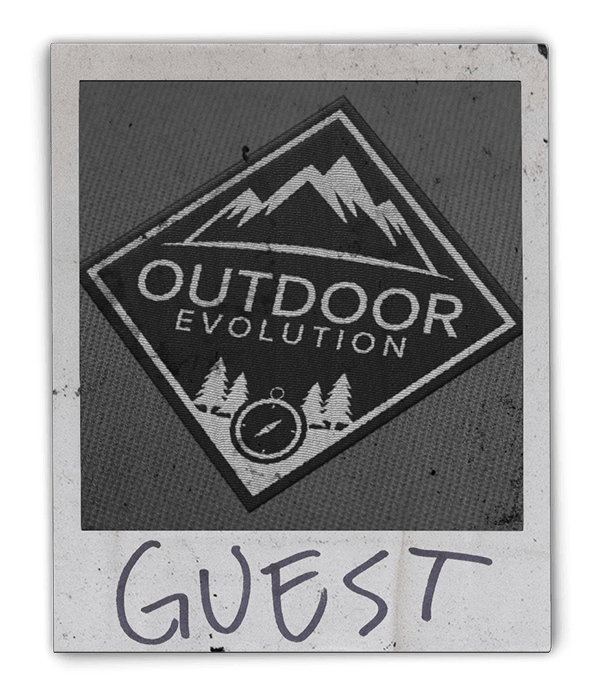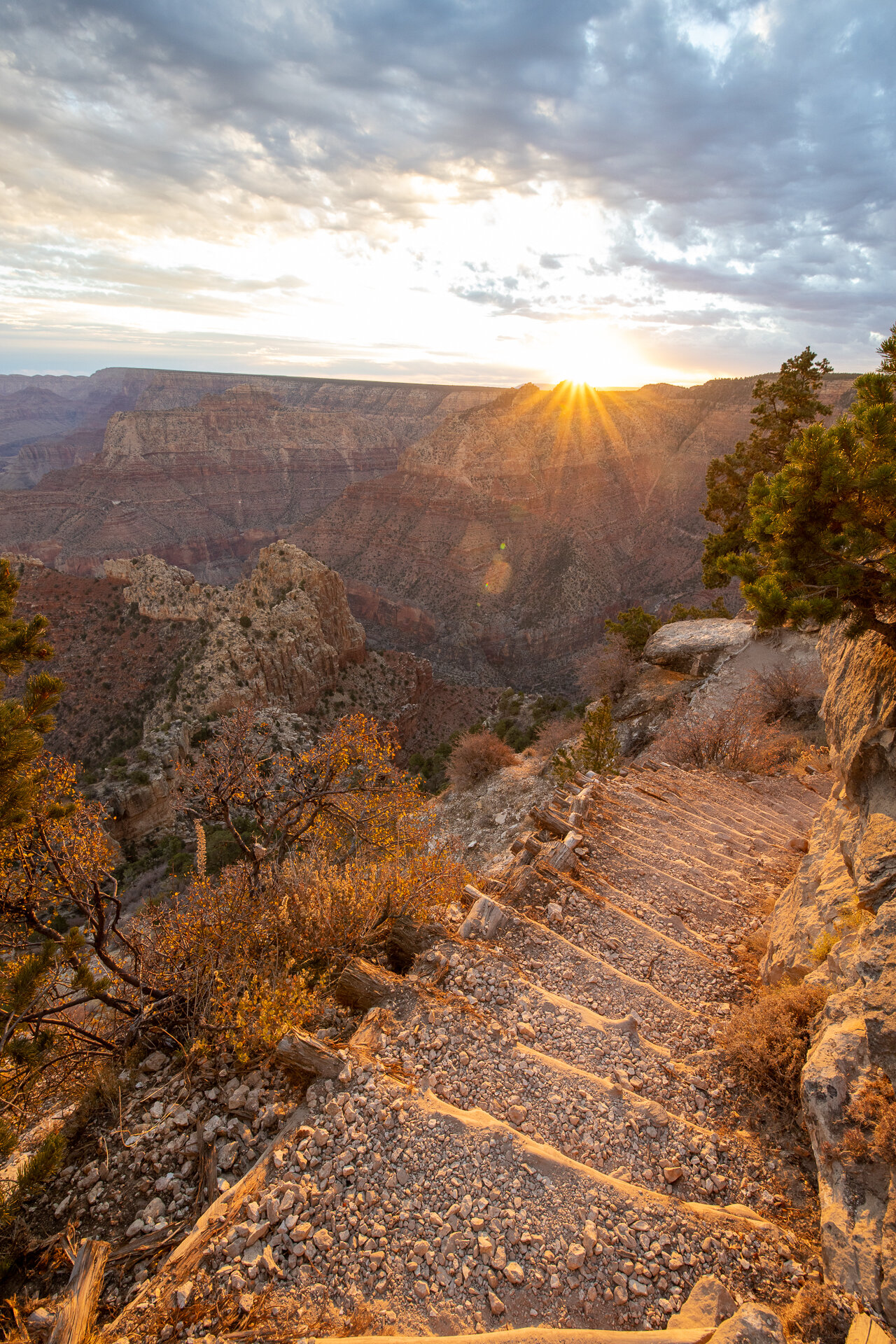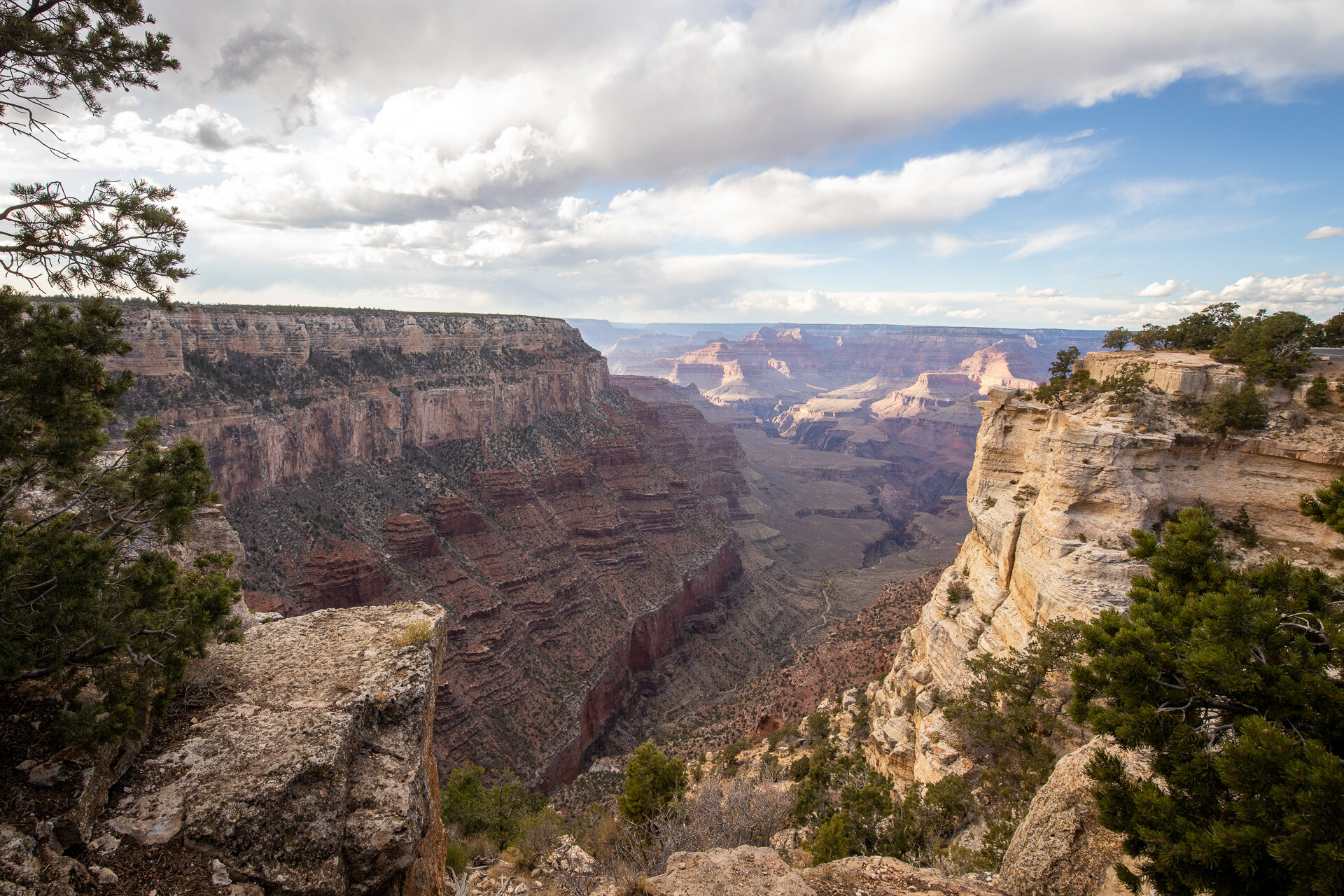How to Run a Rim-to-Rim-to-Rim

The Grand Canyon, one of the Seven Natural Wonders of the World, hosts millions of visitors each year. People flock from all over the world, eager to see the epic canyons vast array of buttes, spires, and depths. Two billion years of geology offer observers sights that cannot be seen anywhere else on earth. Some are satisfied to gaze out across it from either of its rims. The South Rim, easier to access from nearby Flagstaff, sees most canyon visitors. Still, many are motivated to make the longer, more remote drive to the North Rim. Some visitors cannot be satisfied just looking out at the canyon; they feel the need to enter it themselves. Popular hikes include going down the Bright Angel Trail or South Kaibab Trail, sometimes all the way to the Colorado River and back. The river itself hosts other visitors; a rafting trip of the Grand Canyon can be the most epic adventure of anyone's lifetime.
For others, though, the canyon calls them in even further. A full-day odyssey, sometimes even multiple days, running across the canyon and back, a rim-to-rim-to-rim is a challenge unlike any other in the canyon. Depending on the exact route a runner takes, the distance ranges from about 41-43 miles. Still, no matter which specific trails are taken, the challenge of losing and gaining 11,000+ feet of elevation in such a short distance makes this undertaking nothing less than the most severe kind. Add in the notoriously hot and dry conditions of the Grand Canyon, along with its general lack of frequency of water sources, and the challenge of a rim-to-rim-to-rim requires careful planning, diligent training, and precise execution on the day of.
Training
Runners preparing for a typical marathon - 26.2 miles - often train for two to three months to prepare themselves for such a distance. This run, almost 20 miles longer than a marathon and with far more elevation than your average 26.2, requires just as much if not more training. A runner hoping to go across the canyon and back must diligently prepare their legs and cardiovascular endurance for the endeavor. The distance, along with the elevation, makes training a little less straightforward as well. Still, many people have done this. The proper training plan should be formulated by knowing one's own body and learning from people who have done it before. Here are a few tips for training.
Build up a base. No matter where you're starting from when it comes to endurance running, you're going to need to extend your "base" level of fitness. Building up the capability to run for over an hour at a time is how you'll be able to get into the more serious parts of the training.
Don't neglect elevation training. Even the strongest runners will struggle to remain at a running pace on the steepest parts of the climbs up the South and North Rims. This doesn't mean you can do away with training to go up and down, though! Once you've built up that baseline endurance, it'll be essential to start getting your legs in shape to climb up and down. If you live near the mountains - great! Take to your local trails and get as many feet of elevation as possible before your run, gradually building up. If getting onto a trail with real elevation gain is more challenging for you, at least take to some staircases to build up your legs' muscles.
Start focusing on nutrition early. With all the training you're doing, you can't wait until the day of the run to start thinking about food. That will be important, but we'll address that in a later section of this article. Running 5-6 days a week, plus elevation training is useless if you aren't also eating the right stuff! Of course, maintaining a constant, base hydration is critical. Ensure you're eating a balanced diet every day, consuming enough calories to maintain a healthy weight, and prioritizing foods rich in protein and healthy fats. Lean meats like chicken, peanut butter, chocolate milk, nuts, and fruits and vegetables are all key to a healthy training diet. Tip: avoid spicy foods to reduce heartburn during runs and cut down on digestion issues!
Pacing Plan
It's essential to keep in mind just how long this endeavor will take. Although the Fastest-Known-Time for a rim-to-rim-to-rim is a ridiculous 5 hours and 55 minutes, most runners will take anywhere from 10-16 hours to run the route, some even more. If you are attempting to do this run for the first time, and not looking to set any PR's, the best mindset to maintain is that it's a fun run, not a race. It can be healthy and fun to have a time goal, but make sure that the number one goal is getting out of the canyon safely and in good condition!
Your training should start to give you a reasonable estimate of what your overall time may look like. Figuring out a comfortable, average mile time for flats, ups, and downs will be vital. When determining overall pace, remember that you aren't going to be running your fastest miles on any sections of the run. If your fastest flat miles are about eight minutes, it's probably safer to estimate 10-11 minutes when you're in the canyon. Going all out for any section of the run could doom you to exhaustion later in it.
Keep in mind that even though downhills are more comfortable on the lungs, the canyon's steepness should slow you down. Running straight down into the canyon as fast as you can risk injury and, at the very least, could take all the energy out of your legs that you'll need for the remaining miles. When training, practice pacing yourself on downhills and learn your limits regarding speed coming down a steep trail.
When figuring out your overall pacing plan, it is vital to factor in breaks. Going 40+ miles through the Grand Canyon without breaks is not only unrealistic, but it's also dangerous. You're going to need to stop every once in a while to refill water (and drink more), eat snacks, stretch, and rest in general. The timing of your breaks often depends on water fill-ups, but never be afraid to take more breaks. Before you set off on your run, make sure you check the up-to-date status of all the water spigots in the cross-canyon corridor, found on the park's website. Runners waiting until October or later or starting in early April will often find some sources to be turned off for the winter. This is useful to plan breaks around water stops; it is critical because it will determine what water carrying capacity you'll need to have with you.
Nutrition During Your Run
The best way to figure out what to eat during your run is the same way you're preparing for the run itself: practice. Couple your longer training runs with experimenting with different foods. In general, you do not want to try something for the first time on the day of the run. The risks of your stomach reacting to it poorly can have dastardly effects.
As the run itself progresses, chances are your ability to hold down solid food will go down. Starting with a good, substantial breakfast will be critical. Oatmeal, fruit, peanut butter, small amounts of carbs are sure to get your run off on the right start. If you're a coffee drinker, remember that coffee is a diuretic, and gulping down two cups right before setting off may set you up for trouble later. Consider taking caffeine pills or supplements as the day progresses to give you your drug of choice if you don't think you can go without it.
There are many energy chews, goos, cookies, bars, and snacks out there, all marketed to runners. This is why it's a good idea to try out many different ones during your training runs. You'll be able to zero in on which ones you like the best. You don't want to be 20 miles into your run and unable to eat any of the food you're carrying. Light fruits like bananas, clementines, or apples can also be an excellent mid-run snack; they do add a bit more weight to your pack, so some runners will avoid them.
It can be a good idea to carry some solid food still. Light sandwiches for a more extended lunch break. Salty snacks like pretzels and chips. Even sugary foods like cookies. Just make sure you avoid foods too rich and fiber, and once again, no spicy food.
The most important part of your in-run nutrition is to make sure you are eating as often as possible. Waiting until you feel hungry means, it's too late. Your body digests food slower when you're in motion, so a near-constant stream of caloric intake is necessary to make sure you stay fueled throughout the day. Don't let the tank get to empty before refilling it. Eating while you run is OK, but most of your food will be eaten during breaks. A great excuse to take more breaks! Couple the constant eating with enough time resting to allow for some speedier digestion, and you should be good to go all day long!
Figuring out your route, and when to run it
As we alluded to earlier, a few different routes can be taken for a rim-to-rim-to-rim. The primary way to get up and down from the North Rim is the North Kaibab Trail. However, there are two routes for the South Rim: Bright Angel Trail and South Kaibab Trail. The Bright Angel Trail is the longer of the two by almost three miles but has about a thousand feet less of elevation gain.
Many runners will run down one of the two trails and up the other. Some still choose to do the same trail both ways. When figuring out which route you should take, consider the exact distance you want to run. The shortest distance possible would be going down and up South Kaibab, but it will be much harder coming out of the canyon. If you want to see both trails, consider going down South Kaibab, the steeper of the two, on fresh legs. Then you can come up Bright Angel, which will be an easier climb and crucially has a water source on it; South Kaiba is dry the whole way, and you'll have to carry all your water from Phantom Ranch up to the top.
This is a seasonal run. Attempting it from the months of May-September is highly unadvised. Temperatures at the bottom of the Grand Canyon can rise well over 100 degrees Fahrenheit during the summer. Many people are hospitalized due to heat exhaustion, heatstroke, and dehydration just from a day hike in the canyon during the summer, much less a rim-to-rim-to-rim. As the summer turns to fall in late September, runners will begin. Even then, the heat can still be an issue. Most runners will wait until mid-October or even later to attempt it.
The run is doable through the winter, but keep in mind, as we mentioned above, that most of the water will be turned off during winter. A different hydration strategy will be necessary if Phantom Ranch becomes the only possible place to fill water on the whole run. Additionally, the North Rim particularly can receive huge amounts of snow and ice. The final few miles climbing up the North Kaibab Trail can be completely covered and borderline impassable during the coldest months of the year.
If planning a Spring run of the rim-to-rim-to-rim, check with the park's website for when water is turned on, and monitor up-to-date trail conditions on the North Kaibab Trail. In general, mid-April is a safe bet for planning an early-season run of the canyon.
The most important advice: have fun
As we mentioned earlier, typically, this will be a fun run, not a race. It's an opportunity to see the canyon in a way that most people never will. Spending the better part of an entire day all over the canyon can be an incredible experience from one side to the other. If you execute proper training, nutrition, hydration, and pacing plans, you're sure to feel great the whole day and be able to enjoy everything the canyon has to offer fully.
As the run progresses, always be checking in with your body. Don't let smaller problems become bigger ones. Drink constantly and eat frequently. If you feel a modicum of chafing begin, put on some body glide. If you feel a hot spot, develop, tape it up immediately. Monitor any irregular pain in your legs diligently (muscle soreness is to be expected; sharp and achy joint pains are dangerous). The goal is to finish, and it won't happen unless you stay up on everything your body requires all day.
All time spent in the canyon is special, and this should be no different. Have fun, take your time, and enjoy every step. You'll thank yourself when you're standing back on whichever rim you started on, looking out over what you just conquered!







